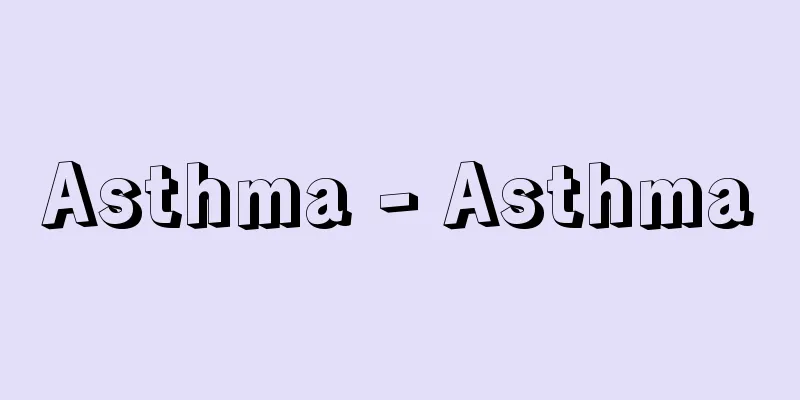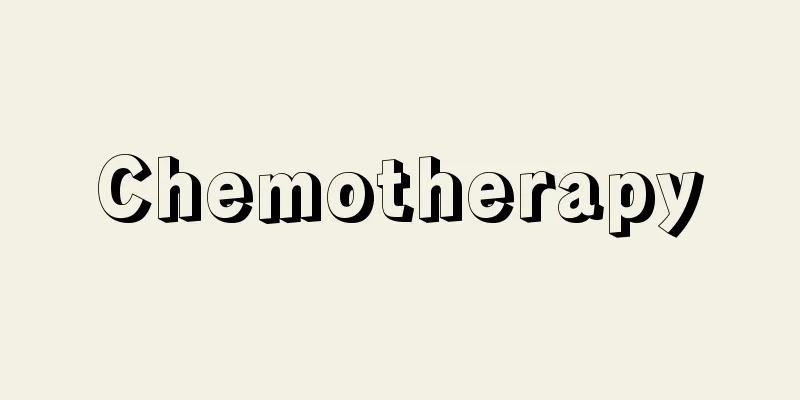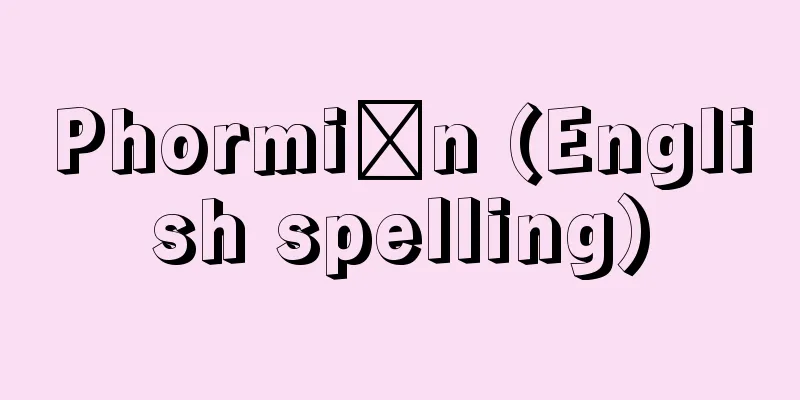Asthma - Asthma

|
Asthma includes bronchial asthma, cardiac asthma, and uremic asthma, but simply saying asthma means bronchial asthma. In other words, the commonly used definition of bronchial asthma published in 1962 by the American Thoracic Society states that "asthma is a condition in which the trachea and bronchi are hyperresponsive to various stimuli, and is clinically manifested as dyspnea, coughing, and wheezing, and in which widespread narrowing of the airways changes naturally or with treatment." In the past, asthma simply referred to paroxysmal dyspnea as a symptom, but this usage is now avoided. Various causes have been suggested since ancient times, but the most widely accepted today is the involvement of allergies. In addition, asthma attacks can be triggered or aggravated by airway infections, psychological factors, and exercise. Asthma is classified into atopic type (exogenous), in which allergies are clearly involved, infectious type (endogenous), in which infection is an important factor, and mixed type. Symptoms are characterized by paroxysmal dyspnea accompanied by reversible wheezing. When an attack occurs, the patient feels more comfortable sitting up than lying down. Attacks last for various periods, from a few hours to a few days. When dyspnea continues for more than 24 hours, it is called status asthmaticus. Once the attack has subsided, the patient often returns to normal as normal. Attacks are most common in autumn, followed by spring. They are particularly common during seasonal changes. They often occur between midnight and dawn. Eosinophils, Charcot-Leyden crystals, and Curschmann spirals may be found in sputum, and skin reactions using various pathological antigens are often positive for house dust and mites. The main treatment is inhaled steroids. When the causative antigen is clear, desensitization therapy, anti-IgE antibody therapy, and immunosuppressant administration are also performed. It is also important to avoid overwork and overeating, be careful not to catch a cold, and quit smoking. [Tomoyuki Yamaguchi] [References] | | | | | |Source: Shogakukan Encyclopedia Nipponica About Encyclopedia Nipponica Information | Legend |
|
喘息には気管支喘息、心臓喘息、尿毒症喘息などがあるが、単に喘息といえば気管支喘息を意味する。すなわち、よく使われる1962年に発表されたアメリカ胸部医学会American Thoracic Societyの気管支喘息に対する定義によれば、「喘息とは気管や気管支が各種の刺激に対し反応性が亢進(こうしん)している状態で、臨床的には呼吸困難、咳(せき)、喘鳴(ぜんめい)となって現れ、気道の広範な狭窄(きょうさく)が自然に、あるいは治療により変化する疾患」である。かつては喘息といえば単に症候としての発作性呼吸困難をさしたが、現在ではその使い方を避けている。 病因については古くから種々あげられているが、現在アレルギーの関与がもっとも広く認められている。そのほか、気道感染、精神的な要因や運動によっても喘息発作が誘発ないしは増悪する。アレルギーの関与の明らかなアトピー型(外因性)と感染が重要な要因となる感染型(内因性)と混合型に分類される。 症状は可逆的な喘鳴を伴う発作性の呼吸困難が特徴である。発作がおこると、患者は横臥(おうが)しているよりも起坐位(きざい)のほうが楽である。発作の持続は数時間から数日にわたり、さまざまである。呼吸困難の状態が24時間以上続くような場合は喘息重積状態とよぶ。発作が軽くなり治まってしまうと、健康人とまったく変わらなくなることが多い。発作は秋がもっとも多く、ついで春に多い。とくに季節の変わり目に多い。1日のうちでは真夜中から明け方にかけておこることが多い。痰(たん)には好酸球、シャルコー‐ライデンCharcot-Léyden結晶、クルシュマンCurschmannの螺旋(らせん)体をみることがあり、種々の病的抗原を用いての皮膚反応では室内塵(じん)とダニに陽性を示すことが多い。 治療の中心は吸入ステロイド薬である。原因抗原の明らかなときの減感作療法や抗IgE抗体療法、免疫抑制剤投与なども行われる。過労や過食を避け、感冒に注意し、禁煙が必要である。 [山口智道] [参照項目] | | | | | |出典 小学館 日本大百科全書(ニッポニカ)日本大百科全書(ニッポニカ)について 情報 | 凡例 |
Recommend
Fuji's human hole - Fuji no Hitoana
Otogi-zoshi. Also called "Nita Shiro" an...
Chiba [city] - Chiba
A city in the north-central part of Chiba prefectu...
Kojima Goryu
Based in Shin-Kumano Gongen (Hayashi, Kurashiki Ci...
Photon echo
A spectroscopic phenomenon that has a perfect anal...
Acht
...However, for example, in the Germanic ancient ...
Ikkoshu - Ikkoshu
...The Pure Land sects that practiced Ikko-sect o...
Keshab Chandra Sen
1838‐84 A modern Indian religious reformer. He joi...
Cleft palate
What is the disease? A cleft palate is a defect i...
Kamagari [town] - Kamagari
A former town in Aki District, southern Hiroshima ...
Tritoma
…All of them are mycophagous and live on mushroom...
Batch distillation column - Kaibunjoryutou
…By repeating this process, it is possible to obt...
terra fusca (English spelling) terrafusca
…It is found in the karst regions of the Mediterr...
Pancreatic islets transplantation
Since diabetes (type I or juvenile type) is caused...
Vedantavada (English spelling)
…The most influential school of Indian philosophy...
Grilled pheasant - Grilled pheasant
…Hafushizake (feather-fested sake) is made by gri...









